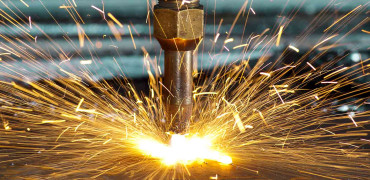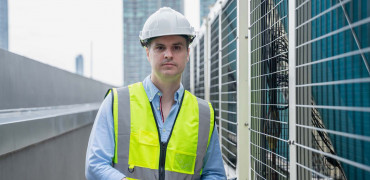Achieving net zero buildings looks like an insurmountable challenge when viewed as a whole. But breaking it down into smaller steps can make the process manageable, particularly for facilities professionals.
Many in the FM profession find themselves increasingly involved in strategic decisions and day-to-day delivery around corporate carbon goals.
There are no hard and fast rules about where to start, which is a blessing and a curse – leaving the options wide open.
Start with the basics of age and operational status which can identify any urgent requirements.
Know your starting point
One place to consider taking those first steps on the road to net zero buildings is with building services.
Heating, hot water, cooling and ventilation are large energy users and therefore have a significant impact on the operational carbon of a building.
This is because they use about 40% of energy in the average commercial building, so any savings made here have the added benefit of reducing operating costs.
Before undertaking any reviews or changes to any part of your building services, knowing your actual (metered) building energy use can be useful.
Not only does this give you a better understanding of your energy costs, but it also provides a benchmark. This can show the success of any system changes or upgrades – and help you calculate payback periods accurately.
The value of an EPC
It’s also important to understand how your building is performing right now.
Even if you have an EPC certificate, this may be up to ten years old.
Moreover, they indicate theoretical energy use, not actual consumption.
That said, an EPC certificate can be helpful because it provides a list of recommendations for energy efficiency improvements (which should be included with the certificate).
Survey your equipment
A good first step is making a survey of building services equipment in your building or across the estate. It is surprising how often equipment is missed from asset lists due to personnel moving on, misplaced records etc.
The review can start with the basics of age and current operational status. This can identify any urgent requirements. For example, rules on refrigerants in air conditioning systems have changed over the years, so it’s good to determine what’s on your site.
Hopefully, none of the equipment is using an outlawed refrigerant (such as R22). However, it is helpful to have this information as it will almost certainly impact the ongoing costs for maintenance of the kit. As refrigerants enter the ‘phase down’ period their price inevitably rises adding to S&M costs.
Checking performance
Another step to consider is to check equipment performance, particularly of big energy users such as chillers, for example. FM teams may already be aware of ‘glitches’ in heating and cooling systems. If you’re looking for clues that building services equipment isn’t optimised, here are a few to bear in mind:
- It’s suddenly less reliable: Had years of problem-free operation, but now you’re seeing a build-up of issues and having to make more urgent repair call-outs? Not only does this lead to occupant complaints, your equipment is likely to be using more energy and adding to the operational carbon footprint.
- Equipment is becoming energy-hungry: Even if there are no outward signs of problems, your building management system may have picked up on increased energy use. Equipment such as chillers, for example, can use more energy as they age if maintenance drops off.
- Indoor temperatures are not stable: Complaints from building occupants that they’re experiencing ‘hot spots’ as the weather warms up could be an early indication that air conditioning system performance is falling away.
- Your equipment is ageing: An equipment review will quickly identify an age profile of your building services equipment. Much of it is designed to have a long life, but there are limits to how long any item of equipment will last, particularly if maintenance has been patchy. This need not necessarily mean it’s time to replace.
In conclusion
Our existing building stock will be in use for many years, so we must focus on servicing the equipment in it for a long and efficient life.
At Mitsubishi Electric Service & Maintenance, we work with our clients to help them get on the right path to Net Zero with a focus on building services.
Our team of engineers is qualified to work with refrigerants and to provide advice on optimising the performance of equipment such as chillers (of any brand).
By tackling carbon emissions one step at a time, we can successfully transition to a low-carbon future.
Kris Swiderski is Head of Service and Maintenance




